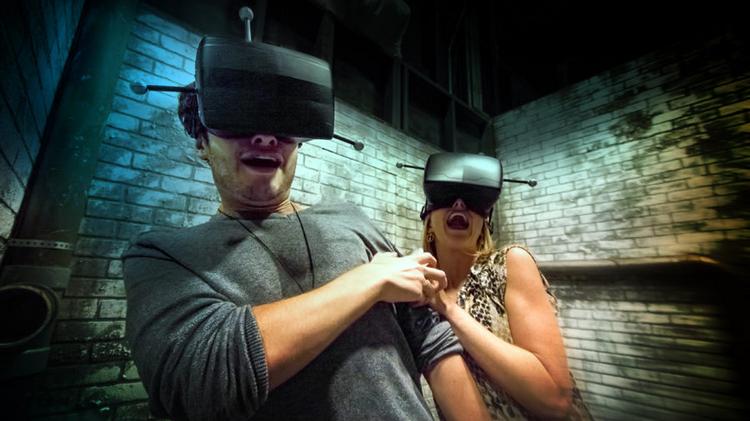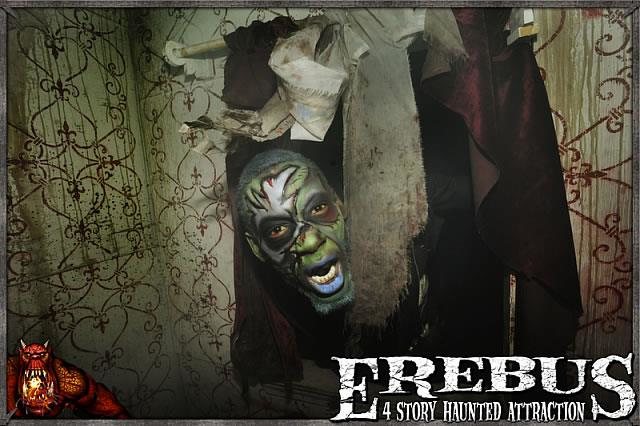How Technology is Making Halloween Attractions Scarier
Posted by Sasha Bailyn on Monday, October 31st, 2016
Halloween always calls for the highest of hijinks, and if we can use technology to scare people to their core, why not? Just about everyone will agree the strobe lights and fog effects add depth to the atmosphere of a haunted attraction, but what if they could decide their own path and level of fright? With guests ranging in age from children to seniors, how do you design an attraction everyone can enjoy?
The trade association America’s Haunts estimates there are approximately 1,200 large-scale haunted attractions in the United States which collectively pull in up to $500 million dollars annually, despite only being open for a few weeks a year. Hauntworld.com estimates that there are more than 4,000 attractions around the U.S. charging entry fees, ranging from small-scale hayrides to full-blown theme park attractions. The attractions gaining attention in 2016 are cleverly taking advantage of technology like never before. Here are some of the most interesting uses of technology in the 2016 haunted attractions lineup.

Virtual Reality
Perhaps the biggest trend this year is the use of virtual reality tech to enhance the guest experience. Rather than the customary walk-through with lunging characters in masks, guests are completely immersed in another world—essentially becoming part of the storyline itself. At the Creepy Hallow Haunted House outside of Houston, Texas, guests strap on a VR headset and will be instantly transported to a first-person shooter environment—while being attacked by zombies from all sides. For fans seeking the high adrenaline engagement that video games provide, these types of attractions are proving incredibly popular.
Fear Factory in Salt Lake City, Utah has an entire haunted house dedicated to the VR experience which allows guests to slay zombies in real time. The attraction even features a haunted zip line and a free fall ride. As attractions top out in what they’re able to accomplish with theming and physical effects, virtual reality and other activities can help amp up the tension in other ways.
At the Fright Fest at Six Flags in Austell, GA guests can strap on a headset before boarding an actual roller coaster which is interactive within the VR environment. The attraction is called “Rage of the Gargoyles at Dare Devil Dive,” and features scenes with simulated helicopter rides and battles with beasts. A product of the partnership between Samsung and Occulus VR, the coaster is one of the first of its kind. With 360-degree immersive views throughout the entire ride, even seasoned roller coaster riders are in for a treat. If Rage of the Gargoyles is a success, content for VR coasters could provide a natural seasonal hook for regional theme parks to stay open past the traditional summer season and draw in visitors.
Even major players like Universal Studios are using virtual reality in their haunted houses this year. In an experience called The Repository, live storytelling and VR technology blend seamlessly to create a terrifying experience. Guests work together in teams to solve a paranormal mystery, where the story is relayed using virtual reality technology.

Animatronics
Animatronic mutant gorillas and a shifting pit of despair—with a full-time IT guy, it’s not an impossible feat for the Terebus brothers, who run one of the biggest haunted houses in the country. The Erebus Haunted Attraction is located in Pontiac, Michigan and was listed as the world’s largest haunted attraction by the Guinness Book of World Records from 2005-2009. In addition to size, Erebus is chock full of animatronic creatures and other cool haunted technology that guests won’t see anywhere else.
The attraction features digital graphics, moving walls, and electronic props. In addition to the technology, the landscape is consistently changing from narrow passages to trap doors, complementing the consistent use of tech quite beautifully.

Interactivity
This year’s haunted attractions also feature a new level of interactivity and customization never before experienced in the space. At the Derailed Haunted House in Ramer, TN guests are given the ability to manage the lighting, colors, and strobes of each room with their own interactive buttons. This means users can minimize or maximize the scare level depending on the appropriateness for the members of their party. So those folks who have children or easily frightened party members with them can tone the scares down considerably, while those who want a heart pounding experience can adjust accordingly.
Another attraction proves interactivity doesn’t necessarily need expensive technology to be effective. “Terror Behind the Walls” is an attraction at the Eastern State Penitentiary in Philadelphia, PA that allows guests to decide on their level of involvement. Visitors can “mark” themselves with a small device which indicates they are ready for the full experience—at which point they can then interact with all the scary dead inmates. Designing this approach into the experience lets guests choose their own adventure, and makes personalization feasible without adding tremendously to staff burden or the technological infrastructure.

Artificial Intelligence
One of the most difficult aspects of technology to incorporate into any event or attraction is artificial intelligence. Otherwise known as AI, it involves astute technology which can read guests and respond accordingly, based on the data collected. The Massachusetts Institute of Technology (MIT) has created a project called the “Nightmare Machine,” in which deep-learning algorithms generate horrifying images across various works of art, installations, and famous landmarks.
Users are urged to “teach” the technology by judging which faces they find scary and which ones are neutral. The platform then “learns” to continuously choose the most terrifying displays based on the feedback from participants. Altered images include those of Brad Pitt and the White House, and they are truly terrifying. As the technology continues to “learn” from participants, the images have taken on increasingly horrific effects. Perhaps the creepiest aspect to this technology is that it truly has a mind of its own and is designed to “want” to scare you, rather than being a puppet popping out of a wall.

The ultimate concept behind AI is that is grows by itself, and once it is set free into the world it can take on a mind of its own. AI is by far the most complex, yet terrifying, form of technology being utilized this Halloween season. As deep learning and machine learning become more sophisticated, the potential applications to customizing a haunted experience to a person’s specific fears become powerful.
Halloween has never been a difficult holiday to celebrate. Unlike the pressures inherent with some other holidays, Halloween is simply about having fun—technology just adds a new edge to the mix. Virtual reality and artificial intelligence are pushing the forefront of experience in almost every aspect of life, and this year, haunted attractions are taking full advantage. Interestingly enough, unlike what is being found in some other industries, technology is not replacing—nor superseding—original Halloween scare tactics. In fact, everything is meshing together in a modern union of classic scares, with a technical twist.
Images sourced courtesy of their attractions with thanks.



 Sign Up For Our Newsletter
Sign Up For Our Newsletter 



